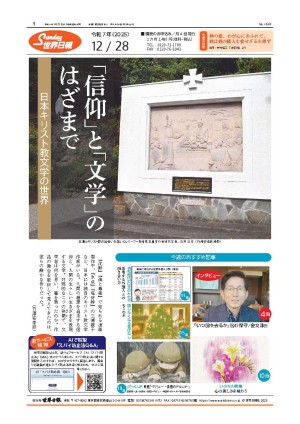不人気な米民主党とメディア<English付>
エルドリッヂ研究所所長、政治学博士 ロバート・D・エルドリッヂ
 トランプ氏より低支持率
トランプ氏より低支持率
国民と分断された党指導者
世論調査は完全に信頼できる指標ではないと言われる。質問の内容、調査するスポンサーの意向などの影響を受けるからだ。その一方で、興味深いだけでなく、米国の社会全体、特に政治の現状を的確に示す指標ともなる新たな調査が米国で実施された。一つは、1982年に創刊された全国紙「USAトゥデー」と、ボストンで06年に創立されたサフォーク大学が3月に合同で行った調査。もう一つは、32年に設立された調査会社の老舗であるギャラップが2016年秋に行った調査だ。
これらについて説明する前に、米大統領選の前後に散見された問題について確認しておく必要がある。この選挙は普通ではなかった。2大政党は最も不人気な候補者を選んだ。そのうち、当選したドナルド・トランプ氏は反エスタブリッシュメント、大衆迎合主義者で、その過激な言動から共和党からも嫌われ、勝つ見込みはないと思われていた。
ほとんどの人々はトランプ氏が勝つとは思っておらず、トランプ氏の当選で、現代の米国が多くの問題を抱えていることを世界に示すこととなった。ただ、トランプ氏自身が問題というより、問題の一つの兆候とみるべきだ。国民はもはや現状に満足せず、民主党のヒラリー・クリントン氏という、より魅力がない現状維持の人物を当選させないために、リスクを冒す覚悟があったということだ。
このことは、先に示したUSAトゥデーとサフォーク大学が3月に実施した調査で示されている。トランプ氏の支持率は47%で、個人的に好きという人の割合は45%だった。大統領に就任して間もなくの支持率としては歴代大統領と比較して低いが、それでもクリントン氏よりは高い。米国人のわずか35%がクリントン氏を支持し、36%が民主党を支持した。
言い換えれば、過去の大統領と比較すればトランプ氏は不人気だが、クリントン氏よりも民主党よりも人気がある。さらに、大統領選から約半年で、クリントン氏、民主党への支持率はさらに下がった。こうした状況を招いたのには幾つも理由があるが、民主党の体質に起因するものがほとんどだ。国民に対するメッセージは「私たちはトランプではない」という程度にすぎず、政策も計画も何ら示さなかった。換言すれば、民主党は政策という点でも、アイデンティティーという点でも、見るべきものがない。
世論調査で不人気だったのは敗北した民主党だけではない。メディアへの国民の支持も似たようなもので、信頼度はトランプ氏より10ポイントも低い37%だ。実際に、無党派層を自任する有権者のうち56%はメディアを不信している。一方、共和党支持者のその割合は78%にも達する。
メディアと民主党という二つの組織が、選挙を通じて密接な関係を持った結果、かつてないほど不人気になったという現象は興味深い。人気がないとされる大統領より、さらに不人気なほどだ。両者にとって、また、民主主義にとって不幸なことに、民主党もメディアも失敗から学んでおらず、米国民に支持されないような報道や政策をいまだに追い求めている。
メディアの不人気ぶりを明らかにしたギャラップの調査「アメリカ人のマスメディアに対する信用は過去最低を記録した」には、気掛かりな結果が示されている。テレビ、ラジオ、新聞のメディアが正確で公平と考えている米国人は32%にすぎない。この調査は1972年に始まり、97年以来、毎年行われている。メディアへの信頼が最も高かったのは76年で72%を記録した。過去15年で信頼度は急落した。
メディアへの信頼度は民主党支持者で51%だが、無党派層で30%、共和党支持者で14%しかない。年齢別にみると、50歳以上のシニア世代で38%が信頼しているが、18歳から49歳の若年層ではわずかは26%だ。
もう一つ、指摘するに値する調査結果がある。あまり科学的ではないが、民主党の指導者層と一般党員の関係がこの結果でよく分かる。2006年にネットワークを開始し、極端に保守寄りのメディアとして知られているFOXニュースが行った調査で、上院の少数派民主党の院内総務チャック・シューマー氏について尋ねた。彼については先月の拙論ビューポイントで紹介した。その結果、平均的米国人の4人に1人だけが彼の考えに共感し、30%が悪い印象を持っている。
おもしろいことに、平均的米国人の30%、民主党支持者の31%が彼のことを知らないと回答した。何と、平均的な米国人よりも民主党支持者の方が、党のリーダーであるシューマー氏を知らない割合が高いのだ。これが意味することは、民主党の指導者は国民から遠く、分断されているということだ。今後の選挙で、国民の支持を得るのはますます難しくなるであろう。
前回の論文で紹介したように、民主党は自身を「非民主」党にしてしまっている。その他の世論調査でも示されているように、ますます不人気になるであろう。今まで、指摘したように、政府、企業、特殊利益団体からの影響を受けない強い野党と独立メディアは、健全な民主主義にとって必要不可欠である。現在、米国の最大野党とメディアは、重い病にかかっている。
Democrats and Media Less Popular Than Trump
Robert D. Eldridge, Ph.D.
While public opinion polls are said to not be entirely reliable indicators due to the questions asked, sponsor of the polls, or other factors, there are some new surveys done in the United States that are not only highly interesting but also a great indicator of the state of American society as a whole and politics in specific.
One of those polls was conducted in March this year by USA Today, a national newspaper begun in 1982, and Suffolk University, a university founded in 1906 in Boston. The other was done in the fall of 2016 by Gallup, a company well known for its pioneering work in surveys, established in 1932.
Before I introduce their findings, I wish to remind readers about the problems seen during and after the American presidential election.
It was not a normal election. The two existing parties chose the two most unpopular candidates imaginable. One of those candidates, Mr. Donald J. Trump, who won the election, even ran on an anti-establishment, populist platform, and indeed was truly an outsider that even his own party wanted to reject because of his extreme rhetoric.
Trump’s election was unexpected to most people and observers, and signaled to the world that there are many things wrong today in the United States. However, Trump is not what is wrong with American society. He is a symptom of the problems. People were no longer happy with the status quo and were willing to risk the unknown over the less-than-appealing known quantity of Hillary Clinton of the Democrats.
This was seen in the first poll alluded to above by USA Today and Suffolk University which showed that in March, Trump’s approval rating was 47% and his personal favorability was 45%. While a 47% approval rating this early in a presidency is poor by historical standards, the rating was higher than the support shown toward Hillary Clinton, who had run against him, in the 2016 American presidential election, and the Democratic Party. Specifically, Americans expressed only a 35% approval rating for Clinton, and only a 36% rate of support for the Democratic Party.
In other words, while Trump, historically speaking, is an unpopular president, he is more popular than either Clinton or the Democratic Party. In fact, they are doing worse today, six months after the elections, than they were during it.
There are several reasons for this situation, many of which are attributable to the Democratic Party itself. The message of the party to Americans seems to be “We are not Trump,” but the party does not offer any platform or plans to the American people. The Democratic Party, in other words, is empty, both policy-wise and identity-wise.
It was not only the defeated Democratic Party that did poorly in the polls. The media did not do much better. It received only 37 percent approval rating, a full ten percentage points less than Trump. In fact, among voters who identified themselves as independents, 56 percent had an unfavorable view of the media, while 78% of Republicans did.
It is interesting to note, therefore, that the two organizations—the media and the Democratic Party—which worked closely together during the elections, are more unpopular than ever. Even more unpopular than an unpopular president. Unfortunately for them, and for democracy, they are not learning their lessons and continue to pursue approaches to reporting and to politics that are not supported by the American people.
The unpopularity of the media was confirmed in an earlier poll by Gallup entitled, “Americans’ Trust in Mass Media Sinks to New Low,” showed some disturbing data. It showed that only 32 percent of Americans trusted the media—television, radio, and newspapers—to be accurate and fair. This particular poll began in 1972 and has been asked yearly since 1997. The highest amount of trust—72 percent—seen was had in 1976. The percentages have dropped dramatically in particular over the last fifteen years.
While 51 percent of Democrats trust the media, only 30 percent of the Independents and a mere 14 percent of Republicans. Among the different age groups, 38 percent of the older generation (50+ years and older) trust the media, while only 26 percent of the younger generation (18 to 49 years old) do.
There was a third, less scientific, poll that also deserves mention as it suggests the state of the leadership of the Democratic Party vis-à-vis members of its own party. This one was conducted by Fox News, a network begun in 2006 and considered excessively biased in favor of conservatives. It asked Americans their opinion about Senate Minority Leader Chuck Schumer, who was introduced in my opinion piece last month. It found that only one in four average Americans had a favorable opinion of him, and some thirty percent viewed him negatively.
What is interesting, while another thirty percent of average Americans asked had never heard of him, thirty-one percent of Democrats had never heard of him. In other words, there were less Democrats who knew of him than average Americans, even though he is one of the supposed leaders of the Democratic Party.
What this means then is that the leaders of the Democratic Party are distant and disconnected from the people, and likely will struggle more and more as they seek to get their support in upcoming elections.
As explained in the previous opinion piece, the Democratic Party continues to make itself into the “Un-democratic” Party. In doing so, it is going to become increasingly unpopular as well, as the other polls are showing. As I have argued to date, a strong opposition party and an independent media, free both from government as well as corporate and special interest interference, are vital for a healthy democracy. Currently, the main opposition party in the United States and the media are very, very sick.





